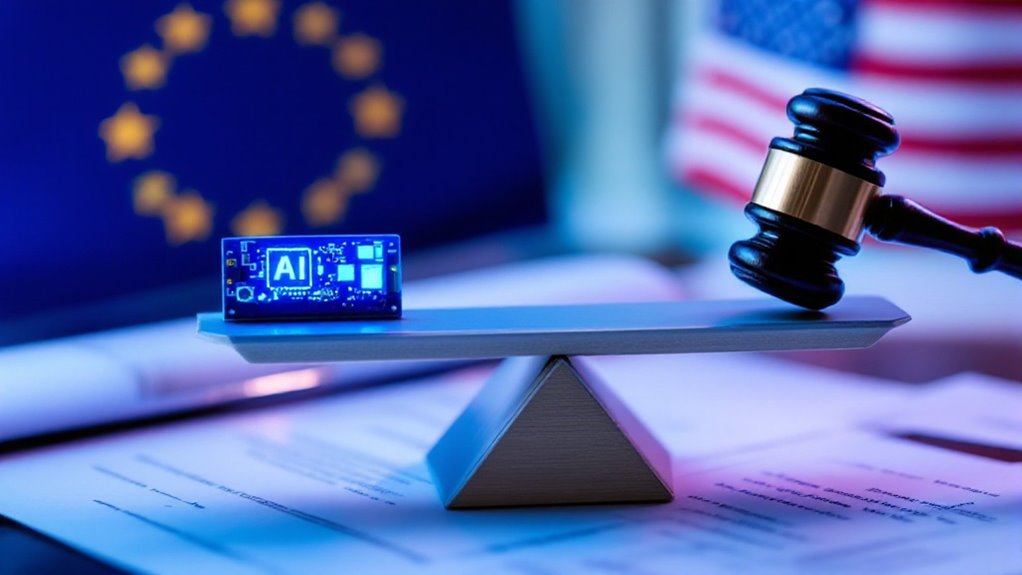Global AI regulation is a patchwork of approaches, with the EU leading via its extensive AI Act that categorizes systems by risk levels. Meanwhile, the US is playing catch-up, retrofitting existing laws rather than building new frameworks from scratch. Companies face the challenge of maneuvering these fragmented rules, especially when EU regulations apply extraterritorially to any AI affecting European citizens. Buckle up for compliance headaches as these frameworks continue to evolve at different speeds around the world.
As artificial intelligence weaves itself deeper into the fabric of modern society, lawmakers around the globe are scrambling to establish meaningful guardrails. The European Union has taken the lead with its groundbreaking AI Act—think of it as the digital world’s equivalent of environmental protection laws, except instead of saving trees, we’re preventing algorithms from ruling our lives.
This pioneering framework introduces a risk-based approach that categorizes AI systems into four distinct risk levels: unacceptable, high, medium, and low. It’s like a spicy food rating system, but for technology that might decide your loan application or monitor public spaces. The spiciest ones—those manipulating human vulnerabilities or enabling government social scoring—are flat-out banned.
Meanwhile, across the Atlantic, the United States is playing regulatory catch-up. Rather than creating thorough legislation, American regulators are patching together existing federal laws while promising more targeted approaches in the future. It’s a bit like trying to retrofit a horse-drawn carriage with rocket boosters—creative but potentially problematic. AI-related bills in the US have seen dramatic growth from just 1 in 2016 to 37 in 2022, reflecting increasing legislative attention to AI governance.
The EU’s regulations don’t stop at Europe’s borders. Their extraterritorial application means if you’re selling AI products that affect EU citizens, you’re subject to their rules regardless of where your company headquarters might be. Talk about long-arm jurisdiction!
The EU doesn’t play—sell AI to Europeans and you’re dancing to Brussels’ tune, regardless of your corporate address.
High-risk applications face particularly intense scrutiny. These include AI systems used in critical infrastructure, education, employment, and law enforcement. Companies deploying such technologies must implement robust risk management systems, maintain documentation, and guarantee human oversight—no small feat for complex neural networks that sometimes mystify their own creators. Effective governance requires organizations to establish clear policies and oversight structures to ensure AI systems comply with both regulatory requirements and ethical principles.
Perhaps most importantly, these emerging frameworks emphasize ethical considerations and fundamental rights protection. Transparency requirements force companies to explain AI-driven decisions affecting users, and prohibitions against exploiting vulnerabilities create essential ethical boundaries. This fragmented regulatory landscape creates significant compliance challenges for international businesses operating across multiple jurisdictions with varying AI definitions and requirements.
The road ahead remains complex. As AI systems grow more sophisticated, regulators face the challenge of creating rules flexible enough to accommodate innovation while rigid enough to prevent harm. It’s a delicate balancing act—one that will likely define our relationship with artificial intelligence for years to come.









